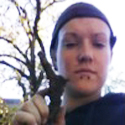Digging Jacksonville – August 2015
As an archaeologist, I am constantly making unlikely, but fascinating connections between my work and things that I come across every day. Perhaps the least likely of these connections came to me on a sunny, tropical morning on a beautiful beach in South Africa. Like most beachgoers, I enjoy combing for shells and rocks left behind on the tide lines. On my walk that morning, I discovered something much more surprising, which instantly solved a mystery that had been puzzling my colleagues and me a world away in Jacksonville, Oregon. I was in South Africa as a guest-student with the University of Tübingen in Southwest Germany. My primary work in archaeology up to that point had been with SOU where I graduated and went on to help excavate Jacksonville’s Historic Chinese Quarter. What I found on the beach were cuttlebones, which in their complete form, at last solved the mystery of the fragments of shell-like material that we had excavated from Jacksonville’s Chinese quarter.
Cuttlebones are lightweight, porous structures which form the inner-support system and buoyancy organ of cuttlefish. Unlike their name implies, cuttlefish aren’t fish at all, but mollusks. They are invertebrates and close cousins of squid and octopods. These small, tentacle creatures inhabit the shallow, tropical waters in the coastal regions of South and East Asia, Western Europe, the Mediterranean, Australia, and Africa. So how did these cuttlebones make their way from the Far East to Jacksonville?
The cuttlebones were excavated from the burned remains of a Chinese house from the late 1800s, and found in association with small, brown glazed, ceramic apothecary jars. The Chinese population in Jacksonville and other small, mining communities in the west were well-known for importing as many of the comforts of home as possible to make their time in the rough communities of America more hospitable. So why cuttlebones?
Cuttlebones, as it turns-out are extremely useful and versatile objects. They have a range of traditional uses including from making molds for casting small pieces of jewelry, making polishing powder, mixing with toothpaste as an abrasive, and as a calcium supplement for modern day household pets such as birds and turtles. Cuttlefish as a whole were even used to extract the highly-prized sepia pigment by the ancient Greeks. In traditional Chinese culture, cuttlebones were valued for their medicinal purposes. Cuttlebones are also boiled to make soup broths which are common to traditional Chinese cuisine.
In traditional Chinese medicine, cuttlebone is called Hai Piao Xiao. It has a variety of uses when applied topically, or mixed into a decoction and ingested. Topically, cuttlebone can be used as a coagulant to stop bleeding, or as an absorbent used in treating blisters. When mixed into herbal decoctions, cuttlebone is a highly-effective treatment for stomach ulcers, asthma, gastritis, as well as uterine infections and bleeding. Cuttlebones are made from aragonite, which is a form of calcium carbonate, which is effective in treating malnutrition and the skin sores associated with scurvy.
The powerful medicinal properties of cuttlebones would have been highly-valued amongst the Chinese population of Jacksonville in the 1800s. Its coagulant properties alone would have been invaluable in a dangerous occupation such as mining. Cuttlebones are amazing structures, and scientists continue to find new and innovative uses for their incredible properties. It is incredible to think that this enlightening discovery was made possible by a walk on the beach over 10,000 miles away.
Featured image caption: A small sample of the cuttlefish bones recovered from the Jacksonville Chinese Quarter site.

 Jorden Peery is an SOU graduate and SOULA alumnus with experience in archaeology all over the Western United States as well as England and South Africa. She participated in many SOULA projects including the Historic Chinese Quarter excavations in the fall of 2013. Jorden currently works as a full time archaeologist with Logan Simpson Design in Corvallis Oregon. You can follow SOULA on
Jorden Peery is an SOU graduate and SOULA alumnus with experience in archaeology all over the Western United States as well as England and South Africa. She participated in many SOULA projects including the Historic Chinese Quarter excavations in the fall of 2013. Jorden currently works as a full time archaeologist with Logan Simpson Design in Corvallis Oregon. You can follow SOULA on